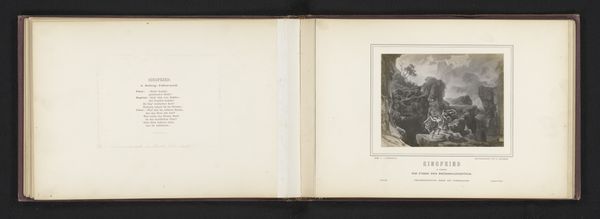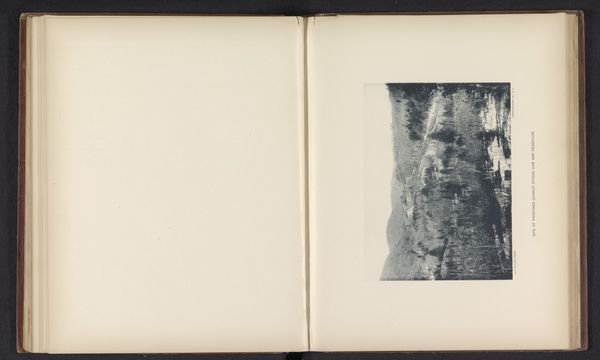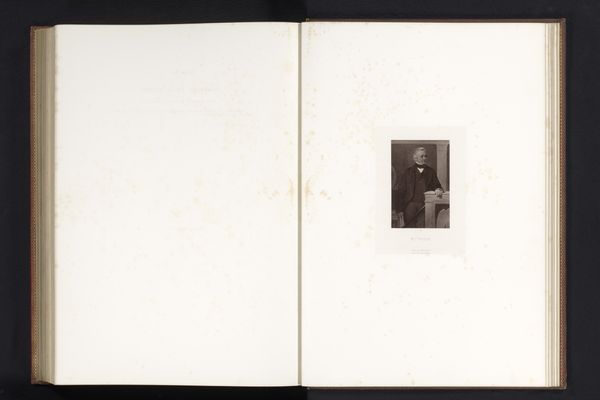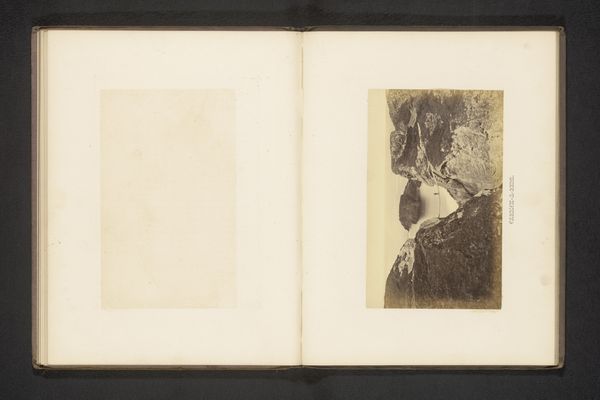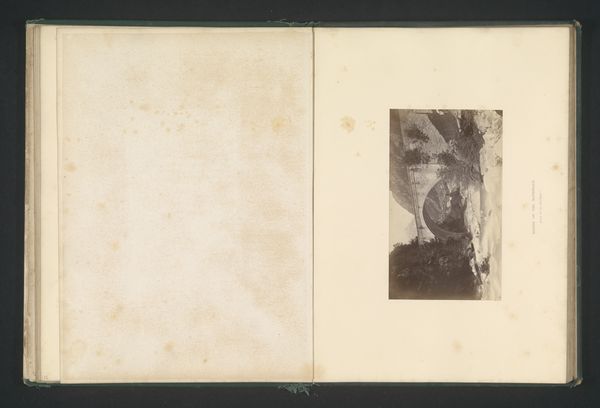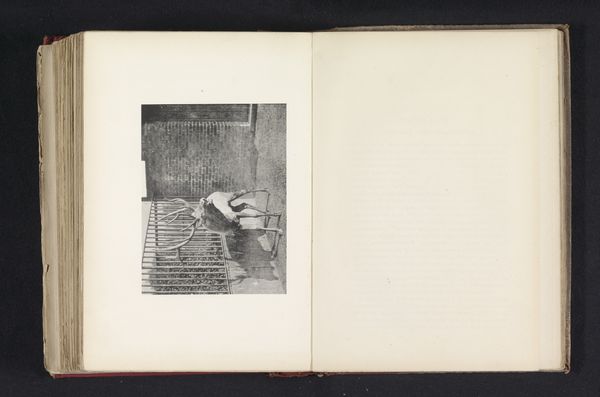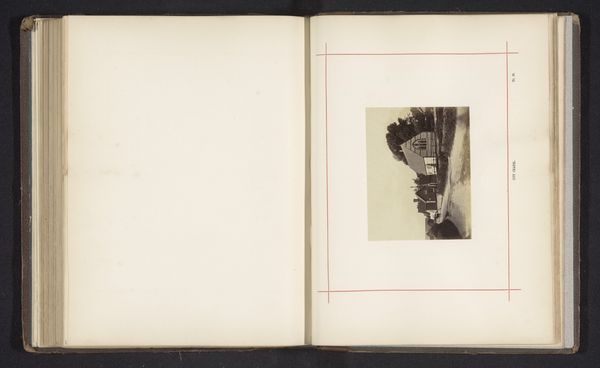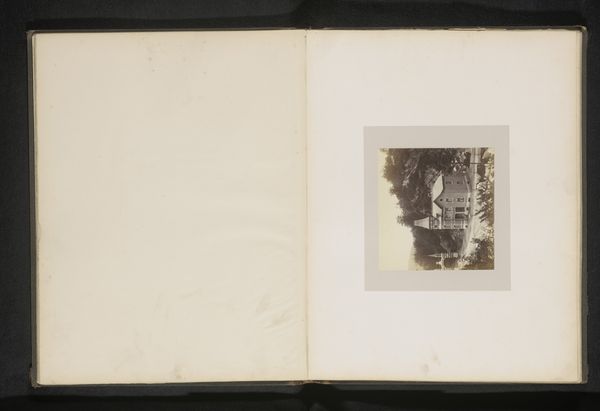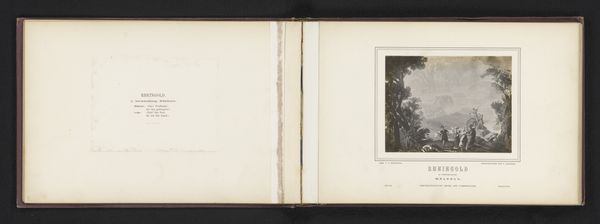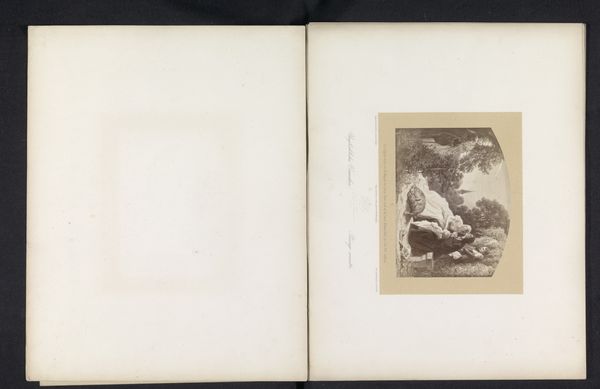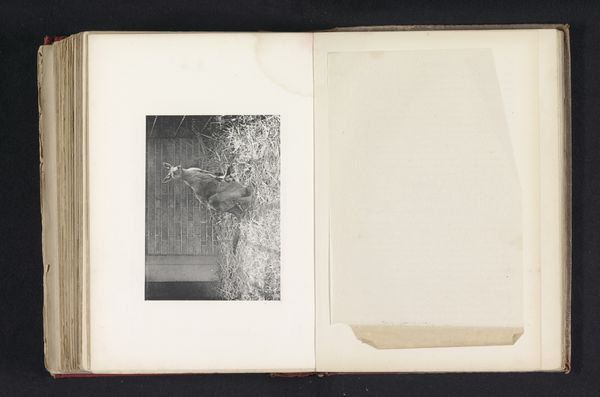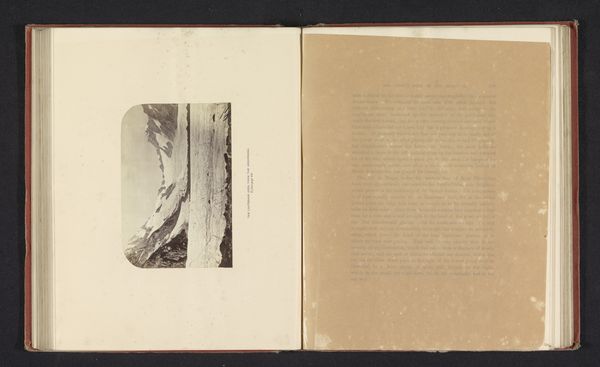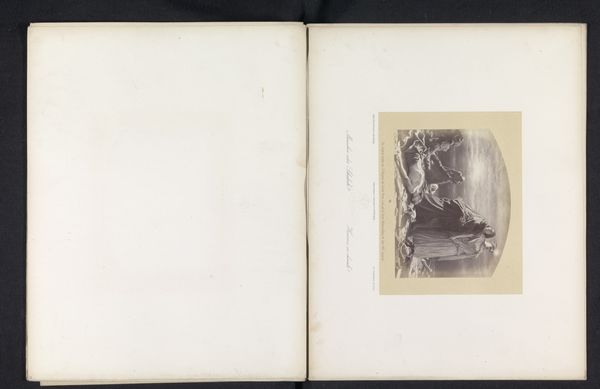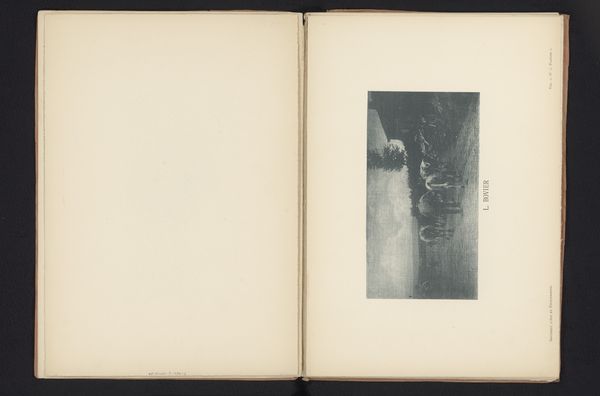
Dimensions: height 110 mm, width 153 mm
Copyright: Rijks Museum: Open Domain
Curator: Looking at this gelatin silver print from 1896, "Woud nabij Kimbongo," by Franz Thonner, my first reaction is just how intensely layered the foliage is. Editor: Yes, it is incredibly dense. The greyscale is so rich, but what strikes me most is its unsettling, almost suffocating mood. Do you think it's deliberate? Curator: Absolutely deliberate. These photographs formed part of a wider scientific study in the Congo. They weren't meant to be aesthetic exercises but served to document the region's flora, in excruciating detail. I feel like the lack of a human presence in the frame makes the landscape seem so overwhelming. Editor: And think about the act of "discovery" itself during this era! Photography played an intrinsic role in the colonizing powers trying to dominate nature through observation and inventory, as a symbolic means of appropriation. I imagine indigenous perspectives were erased entirely from such "objective" landscapes. Curator: Indeed. And in rendering the landscape so heavily textured, the silver gelatin print emphasizes the feeling of nature unyielding. But the lack of color might contribute to this sentiment? Does the monochromatic choice reinforce the colonizer's idea that the jungle is dangerous? Editor: Precisely. By depriving it of vibrant hues, it portrays the wilderness as an "alien" and even an antagonist, thus "justifying" its domination. This ties into impressionism of the day. To further the romantic ideals of foreign exotic lands. Curator: Despite that somber political subtext, there’s a certain beauty. When the artist manages to frame an elusive narrative about exploration by combining science with visual language, what is lost? And what is gained when documenting a “found” landscape? Editor: We are left to wonder. Perhaps these pictures ultimately point toward how visual imagery could contribute both to the celebration and the oppression that were happening during the turn of the century. Curator: Definitely gives one plenty to ponder about photography's lasting impacts.
Comments
No comments
Be the first to comment and join the conversation on the ultimate creative platform.
